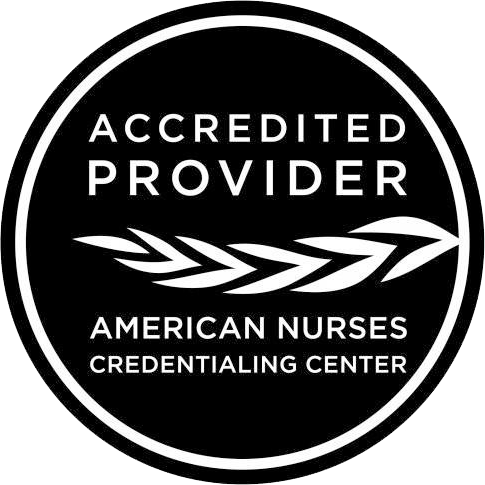
An Evidence-Based Approach to Maximizing Benefit & Limiting Antibiotic Risks in Community-Acquired Pneumonia
-
Register
- User - $15
In 2019, the Infectious Disease Society of America and American Thoracic Society published updated recommendations for managing patients with community-acquired pneumonia (CAP) generating new considerations for inpatient and outpatient practitioners. This presentation will assess emerging literature influencing the optimal pharmacologic management of CAP such as, changing etiologic trends, patient-specific factors, outcomes evidence, and risk factors for adverse drug reactions.
Credits: 1.50 Contact Hours; 1.50 are Pharmacology
Expiration Date: December 31st, 2025
$15.00
LEARNING OBJECTIVES
After taking part in this educational activity, participants should be better able to:
-Describe the etiologic trends of pneumonia in the community.
-Identify relevant antimicrobial related factors such as mechanism of action, duration of action, side effects, and spectrum of activity influencing the optimal empiric therapy for pneumonia.
-Discriminate clinical scenarios requiring initiation of single versus combination antibiotic therapy for pneumonia in the community

Eric Wombwell, PharmD, BCIDP
Clinical Associate Professor
University of Missouri, Kansas City, School of Pharmacy
Dr. Eric Wombwell is a Board-Certified Infectious Diseases Pharmacist and Clinical Professor for the Department of Pharmacy Practice and Administration at the University of Missouri - Kansas City, School of Pharmacy where he is responsible for developing clinical and educational initiatives that promote optimal antimicrobial use. Dr. Wombwell completed his PharmD degree at the University of Missouri Kansas City, followed by an ASHP accredited pharmacy practice residency at the Kansas City VA Medical Center. He has over 15 years of infectious diseases clinical practice experience maintaining an appointment at Centerpoint Medical Center where he provides infectious diseases and antimicrobial stewardship support and precepts the pharmacy residency infectious diseases rotation. Dr. Wombwell has published extensively in peer-reviewed journals on pharmacy and infectious diseases-related topics. His research, particularly on Clostridioides difficile infection prevention measures, has been widely recognized, leading to citations in UpToDate and international treatment guidelines. A dynamic and engaging teacher, Dr. Wombwell has delivered over 100 continuing education presentations to various health-professional audiences both locally and nationally. His dedication to teaching excellence has been acknowledged through numerous recognitions, including the University of Missouri-Kansas City Provost’s Award for Excellence in Teaching.
CE INFORMATION
Obtain Your Credits
To earn credits for this activity, navigate to the Content(s) tab and complete all course components in the following order: 1) watch the course presentation video; 2) complete the course evaluation; 3) pass the post-test with a score of 2/3 (66.7%) or higher. You may retake the post-test until a passing score is achieved, at which point you will be able to view/print a copy of your certificate of completion. This online certificate will also be saved within your profile 'My Dashboard' -> 'Transcript/Certificates Earned' for future access.
Designation Statement
NPACE designates this educational activity for a maximum of 1.50 contact hours, of which 1.50 is pharmacology credit. Participants should claim only credit commensurate with the extent of their participation in the activity.
Accreditation Statement
Nurse Practitioner Associates for Continuing Education (NPACE) is accredited as a provider of nursing continuing professional development by the American Nurses Credentialing Center’s Commission on Accreditation (ANCC).
In addition to ANCC, NPACE is approved as a provider of continuing education in nursing by: the California Board of Registered Nursing, Provider Number CEP8720 and Florida CE Broker #50-1476.
DISCLOSURES
Faculty
Contributing faculty, Eric Wombwell, PharmD, BCIDP has disclosed no financial relationship.
Planners
All planners and contributors involved in this educational activity have disclosed no relevant financial relationships.
Disclaimer
The material presented in this continuing education program is being made available for educational purposes only and is not intended to represent the best or only methods, medications and/or guidelines appropriate for the medical situation discussed. Rather the material is intended to present an approach, view, statement, or opinion of the presenter(s), which may be helpful, or of interest to other practitioners and should not be used by clinicians without the evaluation of their patient’s conditions and possible contraindications on dangers in use, review of any applicable manufacturer’s product information, and comparison with recommendations of other authorities. NPACE disclaims any liability, loss, injury, or damage incurred as a consequence, directly or indirectly, of the use and application of any information given in a presentation.
Disclosure of Unlabeled Use
This educational activity may mention the uses of products that are not approved by the FDA for the indication(s) being discussed. The presenter(s) are instructed to notify participants when they are discussing unapproved uses or investigational agents. The opinions related to unapproved uses of products are solely those of the presenter(s) and are not endorsed or recommended by NPACE. Please refer to the official prescribing information for each product for discussion of approved indications, contraindications, and warnings.
Commercial Support
There is no commercial support for this activity.


